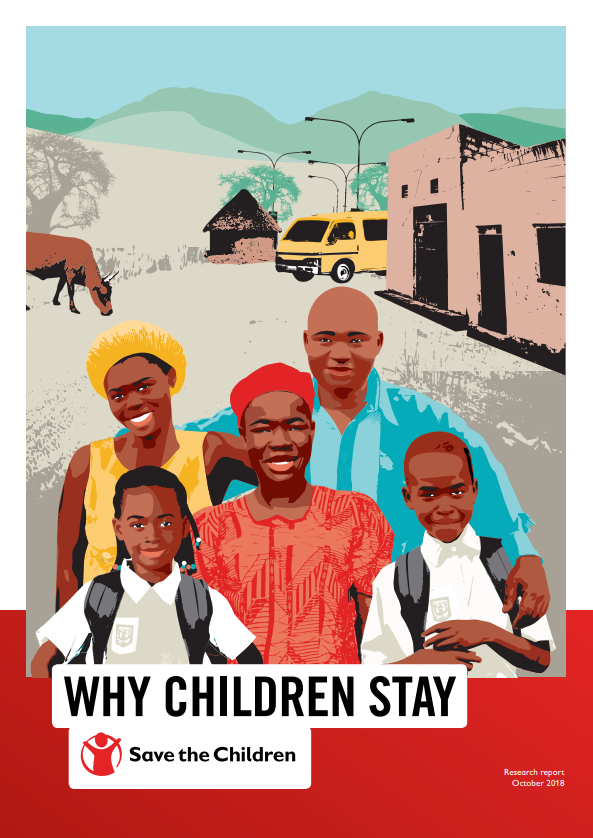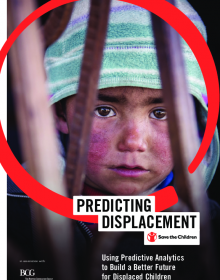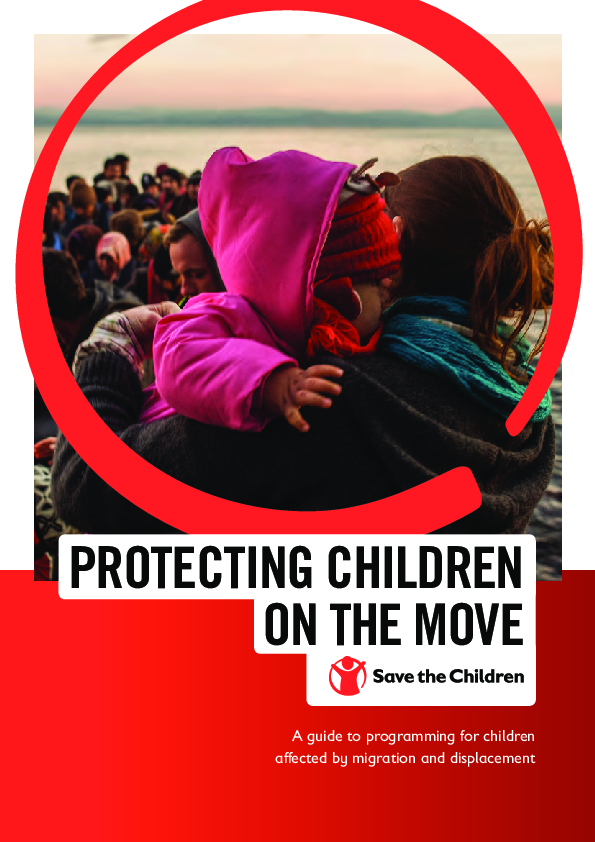First, a Child
Share:
Approximately 35 million children worldwide live in forced displacement, amongst a total of 68.5 million forced migrants globally. This reflects an all-time high since the end of the Second World War. In response, Save the Children launched the Migration and Displacement Initiative (MDI) in 2016, to serve as a reminder that children are primarily children, with specific rights, irrespective of their migration status. Since its founding, the initiative has produced pioneering research, advocacy, and programming efforts to forward this agenda.
Despite the fact that children are disproportionally affected by displacement, the global community has a very limited understanding of how displacement impacts children, and a significant corresponding lack of appropriate and effective child-sensitive migration and displacement (M&D) responses. To bridge this gap, the Migration and Displacement Initiative (MDI) is pursuing a number of projects aimed at asking new questions, challenging former assumptions, and building new resources to improve the support for children and families in displacement.
In 2018, MDI launched two new research and innovation projects: the Why Children Stay report, and its prototype Predictive Analytics tool for anticipating the scale and duration of conflict-induced displacement.
Why Children Stay investigates the decision-making process of children who chose to stay in communities of origin, despite high rates of external migration amongst their peers. Through the collection of 120 children’s voices from Burkina Faso, Ethiopia, and Zambia, Why Children Stay finds that children are very intentional in their choice to stay, even when the trend is to leave. This suggests that, in addition to addressing the factors that drive child migration, actors should simultaneously reinforce and build upon the positive protective factors that children – in their own words – point to as reasons encouraging them to stay.
MDI’s Predictive Displacement project also aims to improve how we programme for children on the move, by enabling the start of a new forecasting capability in our planning around crises where children and families are forced to flee. Through the development of the resulting predictive analytics tool, Save the Children and collaborating agencies will be able to predict the duration and scale of a conflict-induced displacement crisis at its outset. With the availability of such information, the targeting and coordination of responses will be improved for the better of children who have been uprooted from their homes. This prototype tool is currently being implemented across the organization, and MDI is also developing a wider collaborative platform for bringing together other stakeholders, across the migration management sector, private sector, and academic, to share knowledge and potentially co-develop new predictive displacement innovations.
As we witness increasing migration, affecting children at a greater scale than before, the Migration and Displacement Initiative is proactively working to improve our understanding of this challenge, and ultimately, allowing every child to continue their childhood, even in migration.

Why Children Stay
2018 · Save the Children International
Far more children choose to remain within, or close to, communities featuring high rates of migration, rather than to leave – yet we know surprisingly little about their reasons... View Full Abstract

Predicting Displacement: Using predictive analytics to build a better future for displaced children
2018 · Save the Children International
A record-breaking 68.5 million individuals worldwide have been displaced from their homes as a result of persecution, conflict, or violence. Over 50% are children. When a... View Full Abstract
The Resource Centre regularly collaborates with both internal and external partners to make their materials available on our platform. This service is completely free of charge. To learn more about how you can collaborate with the Resource Centre, email us.
Featured Resources
2 resources
Share
Link


